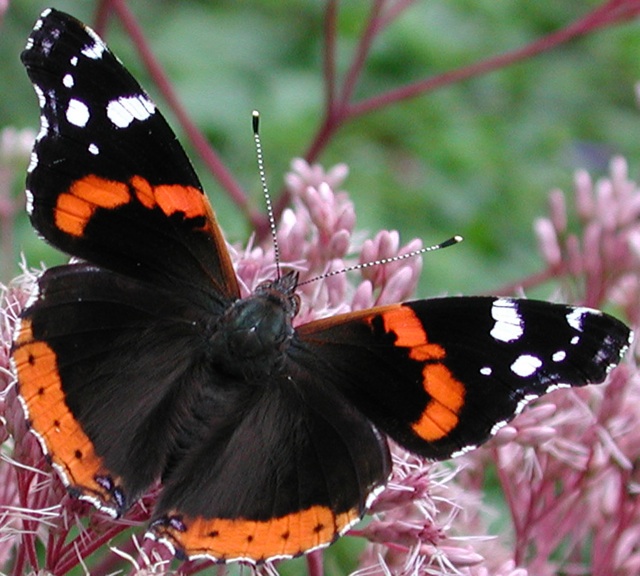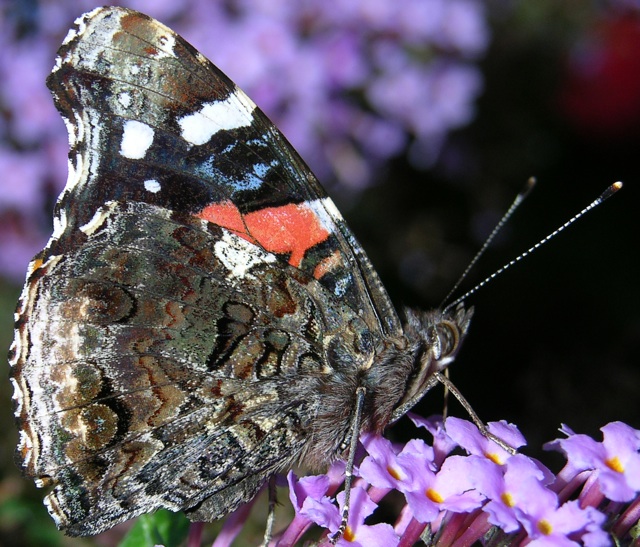|
| Common Name | Red Admiral by Roger Rittmaster => Durham Co.
[View PDF]
 Click to enlarge Click to enlarge
[Google Images] GBIF [Global Distribution ] BoA [Images ] iNaturalist |
| Scientific Name | Vanessa atalanta
|
| Link to BAMONA species account. |
| Map | Click on a county for list of all database records for the species in that county.
 |
| Distribution | DISTRIBUTION: Statewide, occurring in all 100 counties. Some migration occurs in the Eastern states, as evidenced by occasional "boom" years.
|
| Abundance | ABUNDANCE: Fairly common over most of the state, but least numerous in the Piedmont, where often uncommon. Usually not colonial, but at times ten or more may be seen in a day. Quite common in parts of the state in 2001, which was a surprising "invasion" year; 2007, 2012, and 2023 were other good years for the species in most parts of the state.
|
| Flight | FLIGHT PERIOD: Probably three broods with no clear gaps in the flight periods except for a brood break in mid-June in the Piedmont; ranges from early March to well into November, rarely all winter. As with a number of other true butterfly species, adults can be seen flying on warm winter days.
|
| Habitat | HABITAT: Varied, and could be seen almost anywhere. It is found along woodland edges or wide woodland trails most often, but it can be present in fields, marshes, and many other habitats, but rarely in gardens. It is more numerous in moist places, such as the edge of a damp woodland, wet thicket, dirt road through a bottomland, or sewerline clearing, than in dry places.
|
|
| | Plants | FOOD AND NECTAR PLANTS: Members of the nettle family (Urticaceae), such as False Nettle (Boehmeria cylindrica), are the main foodplants of the caterpillar. Most nettle species occur in wetland habitats. The species does nectar on flowers, but it is most often seen basking on the ground or feeding at tree sap, droppings, muddy spots, etc.
|
| Comments | COMMENTS: This is a more common butterfly in the Northeastern states than in the South, though it certainly occurs in every NC county. The Red Admiral may be the fastest flying butterfly in the state, and they are difficult to follow when flushed.
This species is known to be partly migratory. In most years, migrants likely would not be obviously known as such. However, early in 2001, reports of large numbers in TX were harbingers of big things in the Carolinas. By spring, observers here were reporting Red Admirals in good numbers, often in double digits. The species remained common essentially all summer and fall. The species' numbers returned to normal in the first half of 2002, but numbers thereafter crashed (as did those of American Lady), and the species was quite hard to find from July through the fall.
|
State Rank | S5 | | State Status | |
Global Rank | G5 | | Federal Status | |
| Synonym |
|
| Other Name |
|
|
|

 >>
>>

